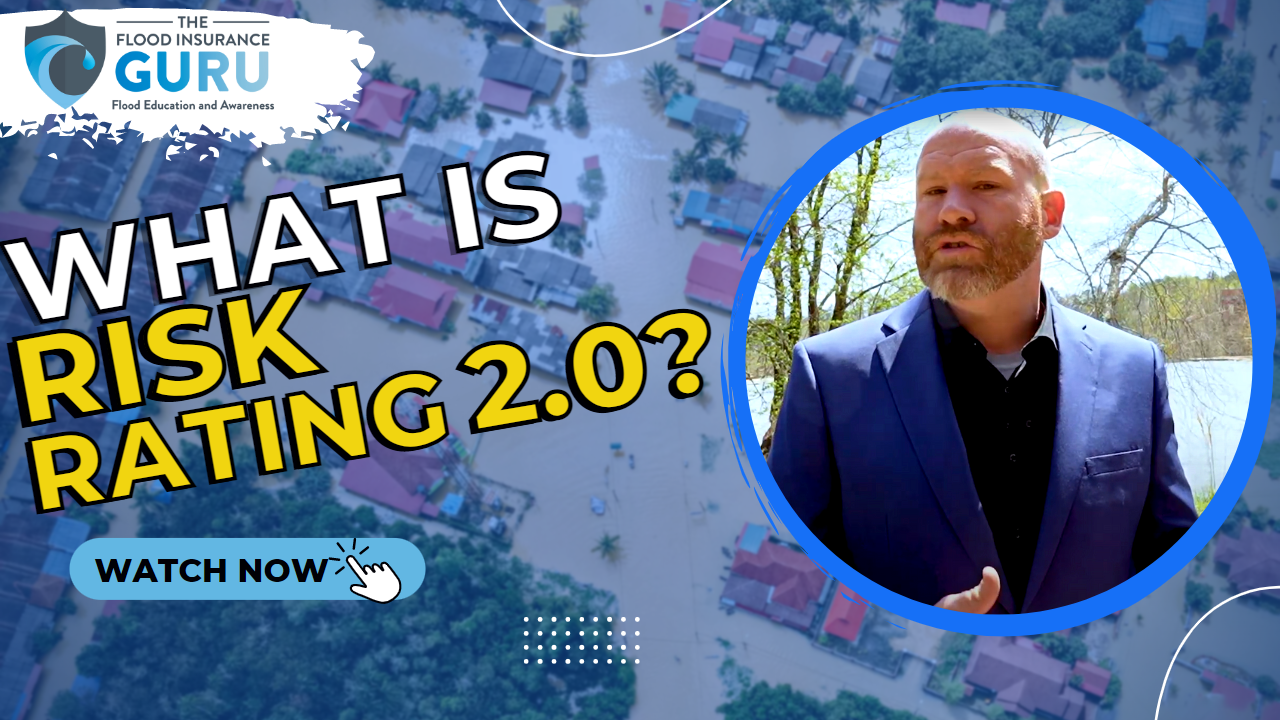Search for topics or resources
Enter your search below and hit enter or click the search icon.
February 13th, 2022
3 min read
By Chris Greene

🔹 Have you noticed changes in your flood insurance premium?
🔹 Did your rate increase even though your flood zone didn’t change?
🔹 Are you buying a new home and unsure what NFIP Risk Rating 2.0 means for your insurance?
If so, you’re not alone!
FEMA's NFIP Risk Rating 2.0 is a new pricing model designed to create fairer and more accurate flood insurance rates. Instead of relying solely on flood zones, this system assesses each property's unique flood risk factors.
At Flood Insurance Guru, we help homeowners and real estate investors understand how Risk Rating 2.0 affects their insurance and what they can do to lower their costs.
In this guide, we’ll cover:
✔ What NFIP Risk Rating 2.0 is & why FEMA changed the system
✔ How flood insurance premiums are now calculated
✔ Who benefits & who pays more under the new system
✔ How to potentially reduce your flood insurance costs
Let’s break it down.
Risk Rating 2.0 is FEMA’s new methodology for calculating NFIP (National Flood Insurance Program) premiums. Unlike the old system that relied primarily on flood zone maps, Risk Rating 2.0 assesses each home individually using advanced data models.
Under the old system:
With Risk Rating 2.0, FEMA now uses modern technology to price policies more fairly based on real-world flood risk factors.
📌 External Source: FEMA’s Official Risk Rating 2.0 Guide
Instead of just looking at flood zones, Risk Rating 2.0 considers a wide range of individual property factors, including:
✔ Distance to water sources (rivers, lakes, oceans, etc.)
✔ Elevation & foundation type (homes on stilts vs. slab foundations)
✔ Flood frequency & severity in the area
✔ Cost to rebuild your home (larger, more expensive homes have higher premiums)
✔ Mitigation efforts (such as flood vents, levees, and raised foundations)
📌 Example Scenario:
This means that even if your flood zone hasn’t changed, your premium might have.
📌 Related: How Elevation Certificates Impact Flood Insurance Costs
📈 Your Flood Insurance Premium May Increase If...
❌ Your home is at a lower elevation than surrounding properties.
❌ You are closer to a water source (river, ocean, lake).
❌ Your home is expensive to rebuild ($500,000+ homes will see higher premiums).
❌ You live in a high-risk area that has experienced multiple flood claims.
📉 You May Pay Less If...
✅ Your home is built higher than FEMA's Base Flood Elevation (BFE).
✅ You are farther from a water source.
✅ Your home is smaller or cheaper to rebuild.
✅ You have flood mitigation measures like flood vents or a raised foundation.
📌 External Source: FEMA’s Flood Insurance FAQs
Even if your rates increase, you may be able to reduce your premium with the right steps:
✔ If your home is built above Base Flood Elevation (BFE), an elevation certificate could help prove your lower risk and reduce your premium.
📌 Get a Free Elevation Certificate Review
✔ Installing flood vents, raising utilities, or retrofitting your foundation could lower your flood risk—and your premium.
✔ Private flood insurance providers often offer better rates than NFIP, depending on your home’s risk factors.
📌 Related: NFIP vs. Private Flood Insurance—Which Is Better?
✔ If you let your policy lapse, you may lose eligibility for grandfathered NFIP rates, meaning your premium could increase significantly when you reapply.
📌 Contact Us to Lock in Your Lowest Rate
📌 Get a Free Flood Insurance Quote
FEMA’s NFIP Risk Rating 2.0 is changing the way flood insurance premiums are calculated.
✔ Some homeowners will see lower rates
✔ Others will pay more based on individual risk
✔ You can take steps to reduce your premium
The best way to know where you stand? Get a flood insurance review.
📌 Get Your Free Flood Insurance Consultation Now
Topics: